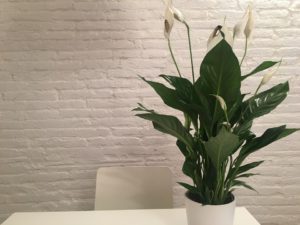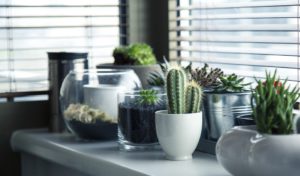Beginner’s Guide to Indoor Plants

I’m have heard this saying on many occasions which is ” I don’t have a green thumb”. When it comes to maintaining garden plants, to the beginner it can become frustrating, plants that are purchased or given to them as a gift having a significant value that was once beautiful now turns into a nightmare.
The good news, however, is that you don’t need a green thumb to have success with maintaining plants it’s all a matter of knowing how and you will be well on your way to growing plants that are healthy and vibrant. Below we will be looking at indoor plant growing tips.
10 Steps to Grow Indoor Plants Successfully

- Location
- Soil type
- Plant Containers
- Watering methods
- How to fertilize
- Indoor garden plant pests
- Diseases
- The importance of humidity
- Pruning practices
- Winter care
1. The importance of location
Location, location, location cannot be stress enough, giving plants the proper lighting is a must. Different plant species have different light requirements. Some plants love high to medium light then there are others that prefer medium to low light. For example, when installing aglaonema’s indoors place it in an area that gets bright indirect to medium light.
The key is knowing your plant’s light requirement need, once you provide them with that you’re on your way to growing a healthy plant.
2. The soil type
Just as plants have different light requirements so it is when it comes to the soil, a good soil for indoor plants is a potting mix that contains peat moss, perlite, and vermiculite. A soil mixture of this sort will resist compaction while absorbing the right amount of moisture.
3. Plant containers
The container that’s chosen should be large enough for y0ur plant to sit and grow comfortably. The container should also have drain holes for water drainage because without drain holes the water that you apply will have no way of escape which will lead to root rot.
A saucer should also be placed under the container to collect the water that comes out of the drain holes. Empty the saucer once it has collected the water. As your indoor plants get larger you may need to switch to a bigger size container.
4. Watering methods
This is a big issue when it comes to container grown plants, know how much water to give your plant. Just like the proper light requirements and soil type garden plants have different water requirements. For example, a ZZ plant can survive on very little water going 2 weeks or longer and look just as healthy.
On the other hand, a croton or peace lily is considered to be a high-maintenance plant needing to be watered more often or they will begin to decline. What I am saying is get, to know your plant watering needs and supply as directed.
5. Fertilizing indoor plants
This one can be a bit tricky if you don’t know what to do, there are so many fertilizer brands that it can be confusing as to what to choose. Although some plant species may require a specific fertilizer, as a rule, to follow, an all-purpose fertilizer can be applied to indoor plants. Before applying fertilizer read and follow the manufacture’s direction for best results.
6. Indoor garden plant pests
Common indoor plant pests consist of mealybugs, spider mites, scales, fungus gnats, thrips, and aphids. These pests can be controlled with neem oil, insecticidal soap. Wiping plants with soapy water and a clean cloth can also bring control.
7. Common indoor plant diseases
Root rot
This disease is influenced by fungus because of saturated or soggy soils, to avoid or bring control know your plant watering needs allowing the soil to try out a bit between watering.
Also to bring control remove the plant from the container followed by removing disease rots, rinse healthy roots with freshwater followed by repotting in fresh soil. In extreme cases, a fungicide may need to be applied.
Powdery mildew
Plants with poor airflow develop powdery mildew, the goal is to allow for proper air circulation by spacing plants apart. Keeping water away from the plant’s foliage, apply water directly to the soil, high humidity, and cool temperature during the winter months will also encourage this disease. Soils that are not allowed to dry out will also influence powdery mildew. Applying a fungicide that’s labeled for powdery mildew will help to bring control.
Sooty Mold
Sooty mold is not a disease in the true sense but is caused by sucking insects such as mealybugs, scales, and aphids. The secretion of these sucking insects known as honeydew, black molds forms from this secretion cause the leaves to take on a dusty black appearance. By controlling these insect pests will also bring sooty mold under control so as not to get on the new growth as it emerges. The use of insecticidal soap, neem oil 0r a solution of soapy water will bring control.
Rust
Rust disease shows up as a rust color on the plant’s stems and leaves, the rust appears as flakes and develops in bumps. To prevent rust do not over your plant, provide good air circulation by thinning out sections of the plant that’s crowding. The removal of infected leaves and properly disposing of them will bring control to the infected plant.
Leaf spot
The leaves become spotted which is encourage by fungal spores in the air that finds a plant surface that’s wet and warm to cling to. If the disease is allowed to persist it will grow and spread, eventually, the leaves will turn brown falling to the soil surface.
To bring control water plant at the soil level, allow the soil to dry out between watering. Providing good circulation by thinning out the plant will help in preventing or bringing control to this disease.
Gray mold
Gray mold is also known as botrytis blight, this disease is caused by a fungus under high humidity conditions, botrytis blight causes the flower buds not open. Flowers that are infected will have spots along with discoloration followed by wilting.
Leaves and shoots also have gray spores and brown lesions, if botrytis blight continues to persist the shoots and the leaves will die back followed by leaf drop. Control measures include the removal of infected parts with a hand pruner and properly dispose of them.
To avoid the spread of this disease disinfect the hand pruner with bleach between cuts. Practicing good sanitation by keeping the plant’s surroundings free of debris, providing the right amount of sunlight, water, and fertilizers, providing good air circulation, avoid overhead irrigation by applying water directly to the soil also using a fungicide that is labeled for botrytis blight will bring control.
Viruses
There is no known cure for indoor plants that are affected by viruses, viruses are spread by thrips and aphid insect pests, using infected tools or tools such as a pruner that’s not sterilized, also propagating an infected plant from the parent.
Symptoms show up as distorted leaf growth, yellow rings or necrotic spots on leaves, stunted growth of the plant, distorted shape, and abnormal flowers discoloration, light and dark green or patches that are yellow on the leaves known as streaking along with mottling and mosaic patterns that is and abnormal dark and light green.
8. The importance of humidity
Humidity plays an important role in a plant’s life, indoor plants prefer a humidity level of about 40-8o%. The humidity level can be increased by placing the plant on a pebble tray, all a pebble tray consist of is filling a medium or a large bowl with pebbles followed by adding sufficient water. The water should fall just below the surface of the pebbles, Placing the container on top of these pebbles will increase the humidity. Misting the leaves with water every other day will also increase the humidity level.
9. Pruning indoor plants
Before pruning your indoor plant take a step back to observe, when pruning use a pruner that’s sharp and clean. Leaves along with stems that are brown should be removed, stems that’s overgrown should be cut back, this procedure will help your plant to keep its natural form.
To encourage new growth make the cut just before a leaf node, a leaf node looks like a small bump or lump. Do not remove more than 29 percent of the stem. Make the cut as close to the main stem as possible. If growing vines indoors if possible use support to direct the growth. In the case of rot removing the infected part is important, a vine can also be pruned to control the growth.
1o. Indoor plant winter care
Indoor plants use less water during this time of the year therefore it’s important to cut back on the amount of water they’re getting. The water temperature should be the same as the air so as not to shock your plant’s roots.
To raise the humidity level do as pointed out in step 8 or if you have a group of plants bring them together in a cluster. During the winter months, you can also stop fertilizing your plants until spring arrives because plants go into a dormant period where their rate of growth slows down.
Look for areas indoors that are getting the warm sun’s rays and take advantage by relocating your plants in these areas. Fluctuations in the temperature can kill house plants so keep them away from fireplaces, ovens, other sources of heat, and cold drafts. A daytime temperature anywhere from 65 to 75 degrees Fahrenheit and 50 degrees Fahrenheit at night time is ideal.
10 Hard to kill indoor plants

Indoor plants that are easy to take care of
- ZZ plants
- Mother in laws tongue
- Rubber plant
- Cactus
- Aloe plant
- Spider plant
- Succulents
- Agloneimas
- Bromeliads
- Rabbit’s ear
The final word on indoor plants growing tips
The use of plants indoors has so many benefits, it is good to bring nature indoors where you can enjoy these benefits. By following this guide you will be on your way to having much success, it’s not about having a green thumb but having the right knowledge that will make growing indoor plants so much fun. Now that You’ve gotten the know-how of growing indoor plants successfully go ahead and give it a try, you will be so happy that you did.
About the author
Norman loves being in the garden, both at home and for his job....
he is 'Natures Little helper' being outdoors, growing his vegetables and flowers from an early age.
Now having spent over 22 years in the profession he want to give some of his knowledge to others...
his vast array of hints and tips you will find scattered over this site will help you no end growing plants in your garden.
